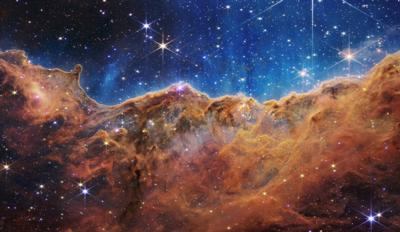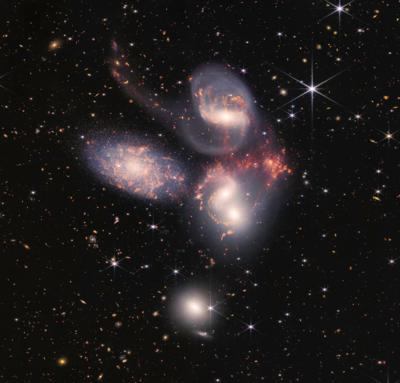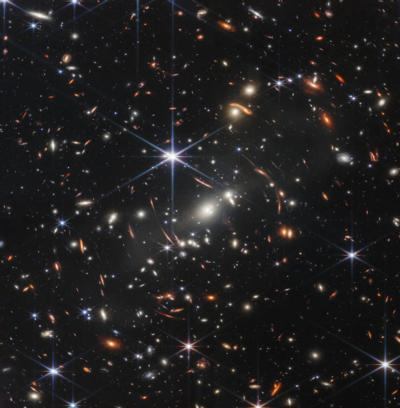I Spy With My $10-Billion Eye …
The mediocrity and self-aggrandizement in which the modern age wallows is occasionally punctuated by instances of genuinely wondrous achievement deserving of sincere admiration and heartfelt accolades.

The dazzling, first images gleaned by the Webb Space Telescope mark such an achievement, and confront a populace riven by ideological division and simmering enmity with the sobering knowledge that it is capable of better.
The James Webb Space Telescope (JWST) is the most powerful tool of astronomy ever launched into space. The telescope’s infrared resolution is unmatched, and the contraption is expected to facilitate the observation of the earliest stars, the most distant galaxies, and provide detailed atmospheric analyses of potentially habitable planets.
Remarkably, the Webb telescope’s first images deliver on every one of aforementioned objectives—in spades.
Specially chosen to highlight the telescope’s capabilities, and selected by a group of astronomers and cosmologists representing NASA, the European Space Agency (ESA), and the Canadian Space Agency (CSA), Webb’s initial observations include:

WASP-96b: a hot, earth-like planet outside our solar system that appears to harbor surface water, haze and clouds.
The Southern Ring Nebula: an expanding cloud of gas that surrounds a dying star approximately two-thousand light-years from Earth.
Stephan’s Quintet: a compact group of galaxies, located in the constellation Pegasus in the vicinity of a supermassive black hole.
The Carina Nebula: Webb’s look at the “Cosmic Cliffs” in the Carina Nebula unveils the previously undetected, earliest, rapid phases of star formation.
NASA Administrator Bill Nelson said of the occasion: “Today, we present humanity with a groundbreaking new view of the cosmos from the James Webb Space Telescope – a view the world has never seen before. These images, including the deepest infrared view of our universe that has ever been taken, show us how Webb will help to uncover the answers to questions we don’t even yet know to ask; questions that will help us better understand our universe and humanity’s place within it.”
“Absolutely thrilling!” added John Mather, Webb senior project scientist at NASA’s Goddard Space Flight Center in Greenbelt, Maryland. “The equipment is working perfectly, and nature is full of surprising beauty. Congratulations and thanks to our worldwide teams that made it possible.”

The release of Webb’s first images heralds the beginning of the telescope’s science operations. Over the next months astronomers around the world will observe a plethora of objects both within and greatly displaced from our solar system. In a very real sense, humankind is about to embark on a whole new age of space exploration.
The James Webb Space Telescope launched 25 December 2021 from Europe’s Spaceport in French Guiana, South America. After completing a complex, orbital deployment sequence, Webb underwent months of commissioning, during which its mirrors were aligned, and its instruments calibrated to the space environment.
NASA predicted the Webb telescope would see an operational life of ten-years. However, owing to fuel savings resultant of the mission’s superbly accurate launch and deployment sequence, the space agency projects Webb may now remain functional for as long as twenty-years.
 Classic Aero-TV: Remembering Bob Hoover
Classic Aero-TV: Remembering Bob Hoover ANN FAQ: Follow Us On Instagram!
ANN FAQ: Follow Us On Instagram! ANN's Daily Aero-Linx (05.15.24)
ANN's Daily Aero-Linx (05.15.24) ANN's Daily Aero-Term (05.15.24):Altimeter Setting
ANN's Daily Aero-Term (05.15.24):Altimeter Setting Aero-News: Quote of the Day (05.16.24)
Aero-News: Quote of the Day (05.16.24)





